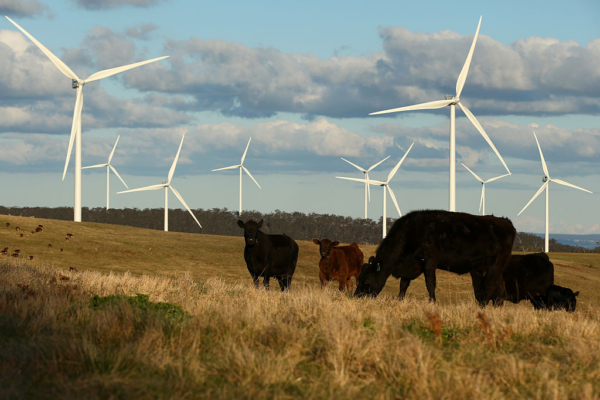Australia’s Renewable Energy Projects Suffer Under High Inflation
A new analysis has found that inflation and supply chain issues have caused significant increases in the cost of renewable energy projects in Australia, with cost pressures likely to remain till the end of this decade.
The Commonwealth Scientific and Industrial Research Organisation (CSIRO) and the Australian Energy Market Operator (AEMO) have released a report analysing the latest changes in the costs of electricity generation technologies that could be used for the country’s transition to net zero emissions.
For the first time, the report revealed an increase in the costs of all technologies compared to the previous year.
Specifically, onshore wind led the upward trend with a 35 percent jump in capital costs, followed by a gas open cycle and black coal at 24 percent.
In comparison, rooftop and large-scale solar panels saw a nine percent rise.
Storage technologies also reported substantial cost growth, with construction and installation costs soaring by 13 percent for one-hour duration batteries and up to 28 percent for eight-hour duration batteries.
The report also found that the COVID-19 pandemic had caused freight and raw materials to be more expensive.
The war in Ukraine compounded this as the global supply chains experienced severe disruptions.
Additionally, the report pointed out that the global race to replace fossil fuels as a means of producing electricity contributed to the rise in the costs of renewable energy projects in Australia.

Nevertheless, CSIRO chief energy economist Paul Graham said there had been signs of moderating in technologies’ input costs.
“During the recovery from these global events, various input costs are showing signs of moderation. However, there is an expected delay due to future price uncertainties and the robust demand associated with the global energy transition,” he said.
“GenCost analysis anticipates that technology costs have mostly peaked and the risk of cost pressures extending beyond 2030 will be mitigated, as the global manufacturing capability established by that time will adequately meet deployment needs.”
While the report forecasted that the costs of solar and wind would drop as manufacturers ramped up production, it noted that new fossil-fuel generation was at risk of higher financing costs over time due to the government’s goal of achieving net-zero emissions by 2050.
CSIRO Says Renewables Remain Australia’s Cheapest Electricity Generation Option
Despite the sharp growth in costs, CSIRO found that renewable energy still remained the cheapest option for new-build electricity generation in Australia.
Specifically, the levelized cost of electricity–which measures the lifetime costs of generating electricity from different technologies–of solar panels in 2022 ranged from $48 (US$33) to $81 per megawatt hour, while onshore wind varied between $58 and $96 per megawatt hour.
In contrast, offshore wind projects were much more expensive to build, ranging from $149 to $194 per megawatt hour, which was comparable to other types of fossil fuel.
Notably, the report did not include the cost of small modular nuclear reactors despite their ability to ensure stable generation capacity for the grid.
In light of the issue, CSIRO said it would firm up the cost of small modular reactors in future reports.
“Nuclear SMR current costs are not reported since there is no prospect of a plant being deployed in Australia before 2030,” the report stated.
“However, some improved data on nuclear SMR may be available in future reports, and projected capital costs for SMR have been included from 2030 onward.
Speaking about the importance of the new costing data, AEMO head of system design Merryn York said the report provided crucial input for the transition to net zero in the energy sector.
“As coal-fired power generation leaves Australia’s grids, we need investment in generation to fill those gaps,” she said.
“And as more variable renewables deliver our energy for consumers and decarbonisation, we need investment in firming–which is on-demand energy to smooth out the peaks and troughs.”




